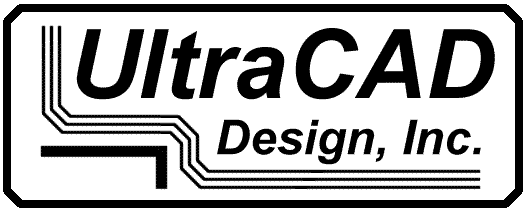
UltraCAD Design, Inc
22518 SE 45th Lane
Issaquah, WA 98029
e-mail: ![]()
Resources
& Tools
 |
UltraCAD Design, Inc |
|||||||
|
22518 SE 45th Lane |
e-mail: |
|||||||
| Home |
Books & Resources |
Calculators & Tools |
Simulations | |||||
| xxxxxxxxxxxxxxxxxxxxxxxxxxxxxxxxxxxxxxxxxxxxxxxxxxxxxxxxxxxxxxxxxxxxxxxxxxxxxxxxxxxx | ||||||||
PCB Trace Calculator
Version 4.3
(Revision 4.3 effective mid 2018
For a complete analysis of trace and via currents and temperatures, see Brooks and Adam, "PCB Design Guide to Via and Trace Currents and Temperatures," Available at Amazon.com. For more on this book, look here.
UltraCAD's newest PCB Trace Calculator makes a variety of calculations related to PCB traces, including trace current/temperature, fusing current, skin effect impacts, and simple Ohm's Law calculations. This new version incorporates changes based on the latest finding from Brooks' collaboration with Dr, Johannes Adam from ADAM Research. The calculations provide a very close fit to the data from the latest IPC standard, IPC-2152 "Standard for Determining Current Carrying Capacity in Printed Board Designs." The four major calculational functions of the calculator are illustrated in the screen shots that follow.
Users have the option of 4 different data sources for trace current/temperature calculations. The first three are the new IPC standards for internal and external traces in still air, and traces in a vacuum. The fourth is the old (now obsolete) IPC-D-275 standard. Although obsolete, this standard has been used for over 50 years and many engineers feel that is has withstood the test of time.
The new IPC standard states that there is little difference between the trace heating/cooling relationships for internal and external traces, a significant departure from past thinking.
The fusing section offers new insight based on the collaboration between Brooks and Adam. This has resulted in much more realistic results from the calculations.
| UltraCAD's universal license is required for this calculator. The calculator is included in the download "ucad-universal.zip." |
| Download "ucad-universal.zip" here. |
|
|
|
|
||
|
This is the main calculator screen. It illustrates trace current/temperature calculations for a 250 mil wide, 1 Oz trace. The crossover frequency for this trace dimension is 14.81 MHz. At a frequency of 18 MHz the skin depth is .6128 mils, reducing the effective cross-sectional area of the trace to 90.785% of its nominal value. If this trace carries 15 Amps at this frequency, the trace's temperature would increase 69.06 degrees C. based on the IPC-2152 standard for an external trace in still air. |
||
 |
||
| Version 3.5 of the calculator has provision for making some modifications to the results based on suggestions in the Appendix of IPC-2152. These suggestions are primarily contained in Sections A.4.2 and A.4.6. For example, assuming the trace above is 10 mils above a plane, the board is more than 25 in^2 in area, and the board is 65 mils thick, the adjustments show that the actual temperature will be only 27.5 oC. Suppose we could tolerate a 40 oC change in temperature. Enter 40 oC at the top of Column B and press the TOTAL factor button again. The result is 100.5 oC. If we enter that temperature back into the main calculator, and solve for width, we would get 180 mils. Under the same assumptions, that would result in an adjusted trace temperature of 40 oC. See the Operator's Manual for more details about these adjustments. (Credit Jack Olson for pushing me to incorporate these adjustments into the calculator.) | ||
|
|
||
|
If we wanted to know how long this trace would last before it melted (fused) carrying 40 Amps, the calculator tells us 2.07 seconds based on Onderdonk's Equation. Based on the thermal simulations from Brooks and Adam, the actual current the trace can carry for 2.07 seconds is 68 Amps. The Skin Effect is limiting this result. At a lower frequency, the trace would last a little longer. |
||
|
|
||
|
The calculator can tell us what the resistance of this trace is at ambient and at operating temperatures, based on the trace geometries above. These values can be adjusted for Skin Effect. |
||
|
|
||
|
Finally, the calculator can perform basic algebraic and Ohm's Law calculations related to the trace. These calculations are not impacted by the skin Effect entries, above. Those effects are inherent in the data entered in this section. |
||